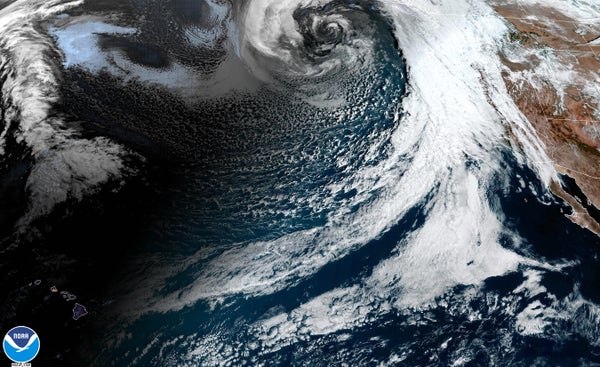February 1, 2024
4 min read
Though atmospheric river storms are dreaded for the damage they can cause, they are also essential to the western U.S.’s water supply, particularly in California
A satellite image shows a powerful atmospheric river hitting the U.S. West Coast on Jan. 31, 2024.
The following essay is reprinted with permission from ![]() The Conversation, an online publication covering the latest research.
The Conversation, an online publication covering the latest research.
Millions of people were under flood alerts and winter storm warnings on Jan. 31 and Feb. 1, 2024, as a series of atmospheric rivers brought heavy downpours and the threat of flooding, mudslides and avalanches to the Pacific Northwest and California. Another powerful storm was expected a few days later.
While these storms are dreaded for the damage they can cause, they are also essential to the region’s water supply, particularly in California, as Qian Cao, a hydrologist at the University of California, San Diego, explains.
On supporting science journalism
If you’re enjoying this article, consider supporting our award-winning journalism by subscribing. By purchasing a subscription you are helping to ensure the future of impactful stories about the discoveries and ideas shaping our world today.
What are atmospheric rivers?
An atmospheric river is a narrow corridor or filament of concentrated water vapor transported in the atmosphere. It’s like a river in the sky that can be 1,000 miles long. On average, atmospheric rivers have about twice the regular flow of the Amazon River.
When atmospheric rivers run up against mountains or run into local atmospheric dynamics and are forced to ascend, the moisture they carry cools and condenses, so they can produce intense rainfall or snowfall.
Atmospheric rivers occur all over the world, most commonly in the mid-latitudes. They form when large-scale weather patterns align to create narrow channels, or filaments, of intense moisture transport. These start over warm water, typically…
Read the full article here







